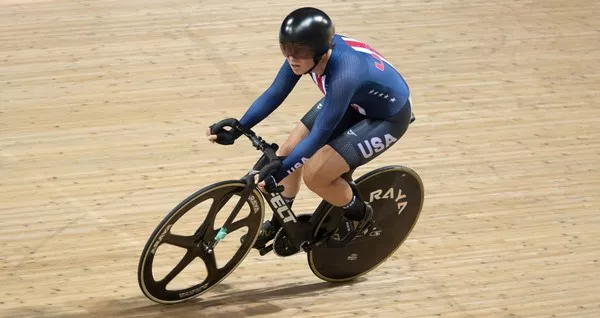In the realm of cycling, where speed and precision reign supreme, track bikes stand as the epitome of engineering excellence and athletic prowess. Designed for the velodrome, these sleek machines command attention with their minimalist design and specialized components. Yet, beyond their aesthetics, track bikes embody a rich history, a unique set of features, and a distinct culture that captivates riders and enthusiasts alike. Let’s embark on a journey to unravel the essence of track bikes and understand what sets them apart in the realm of cycling.
A Legacy of Speed and Tradition
The origins of track cycling trace back to the late 19th century when indoor velodromes became hubs for competitive cycling events. As the sport gained popularity, the need for specialized bicycles tailored to the demands of the track emerged. Thus, the track bike was born, finely tuned to deliver maximum speed, agility, and control on the velodrome’s steep banked curves.
Over the decades, track cycling evolved into a highly competitive discipline, with events like the sprint, pursuit, and keirin captivating audiences worldwide. Alongside this evolution, track bikes underwent continual refinement, incorporating advancements in materials, aerodynamics, and biomechanics to push the boundaries of performance.
Anatomy of Precision
At first glance, a track bike may appear deceptively simple, with its clean lines and absence of gears and brakes. However, a closer inspection reveals a meticulously crafted machine optimized for speed and efficiency.
1. Frame:
Central to the track bike’s design is its frame, typically crafted from lightweight materials such as aluminum, carbon fiber, or steel. The frame geometry is engineered for aggressive riding positions and maximum power transfer, with steep angles and minimal clearance to minimize wind resistance.
2. Wheelset:
The wheelset of a track bike is a critical component, comprising a solid rear wheel and a spoked front wheel. Both wheels are typically constructed from lightweight materials to reduce rotational inertia and enhance acceleration. The absence of a freewheel mechanism in the rear hub ensures direct power transmission from the rider’s pedals to the wheel, maximizing efficiency.
3. Drivetrain:
Unlike road bikes equipped with multiple gears, track bikes feature a single fixed gear, also known as a “fixie.” This fixed gear setup eliminates the need for shifters and derailleurs, streamlining the drivetrain for simplicity and reliability. Riders have direct control over their cadence and speed, requiring precise pedal strokes to maintain momentum and navigate the velodrome’s tight turns.
4. Handlebars and Controls:
The handlebars of a track bike are typically narrow and aerodynamic, promoting an aggressive riding posture and minimizing wind resistance. Brake levers are conspicuously absent, reflecting the track’s smooth surface and the rider’s reliance on controlled deceleration techniques such as “backpedaling” or “skidding” to slow down.
5. Saddle and Pedals:
The saddle of a track bike is designed for performance, prioritizing lightweight construction and minimal padding to reduce weight and maximize power transfer. Pedals are outfitted with toe clips or straps to secure the rider’s feet during intense sprints and accelerations, ensuring optimal pedaling efficiency and control.
Cultural Significance and Community
Beyond its technical specifications, the track bike holds a special place in cycling culture, embodying a sense of tradition, camaraderie, and passion among riders and enthusiasts. Velodromes serve as hubs of activity, hosting races, training sessions, and social gatherings that bring together cyclists of all ages and backgrounds.
For many riders, the velodrome represents more than just a venue for competition—it’s a sanctuary where they can push their limits, hone their skills, and forge lasting friendships within the tight-knit cycling community. Whether pursuing Olympic dreams or simply seeking the thrill of speed, track cyclists share a deep appreciation for the sport’s heritage and the timeless allure of the track bike.
The Future of Track Cycling
As cycling technology continues to evolve, the future of track cycling holds boundless possibilities for innovation and growth. Advances in materials science, aerodynamics, and data analytics promise to further enhance the performance of track bikes, pushing the limits of speed and efficiency on the velodrome.
Moreover, initiatives aimed at increasing accessibility and diversity within the sport are paving the way for a new generation of track cyclists from all walks of life. From grassroots programs to elite training academies, efforts to expand participation and foster inclusivity are poised to shape the future landscape of track cycling for years to come.
Conclusion
In conclusion, the track bike stands as a testament to the marriage of form and function, blending precision engineering with a rich tradition of athleticism and camaraderie. From its humble origins to its modern-day incarnation, the track bike continues to captivate riders and enthusiasts with its speed, agility, and timeless appeal. As we look ahead to the future, one thing remains certain: the allure of the velodrome and the thrill of the track bike will endure for generations to come.

